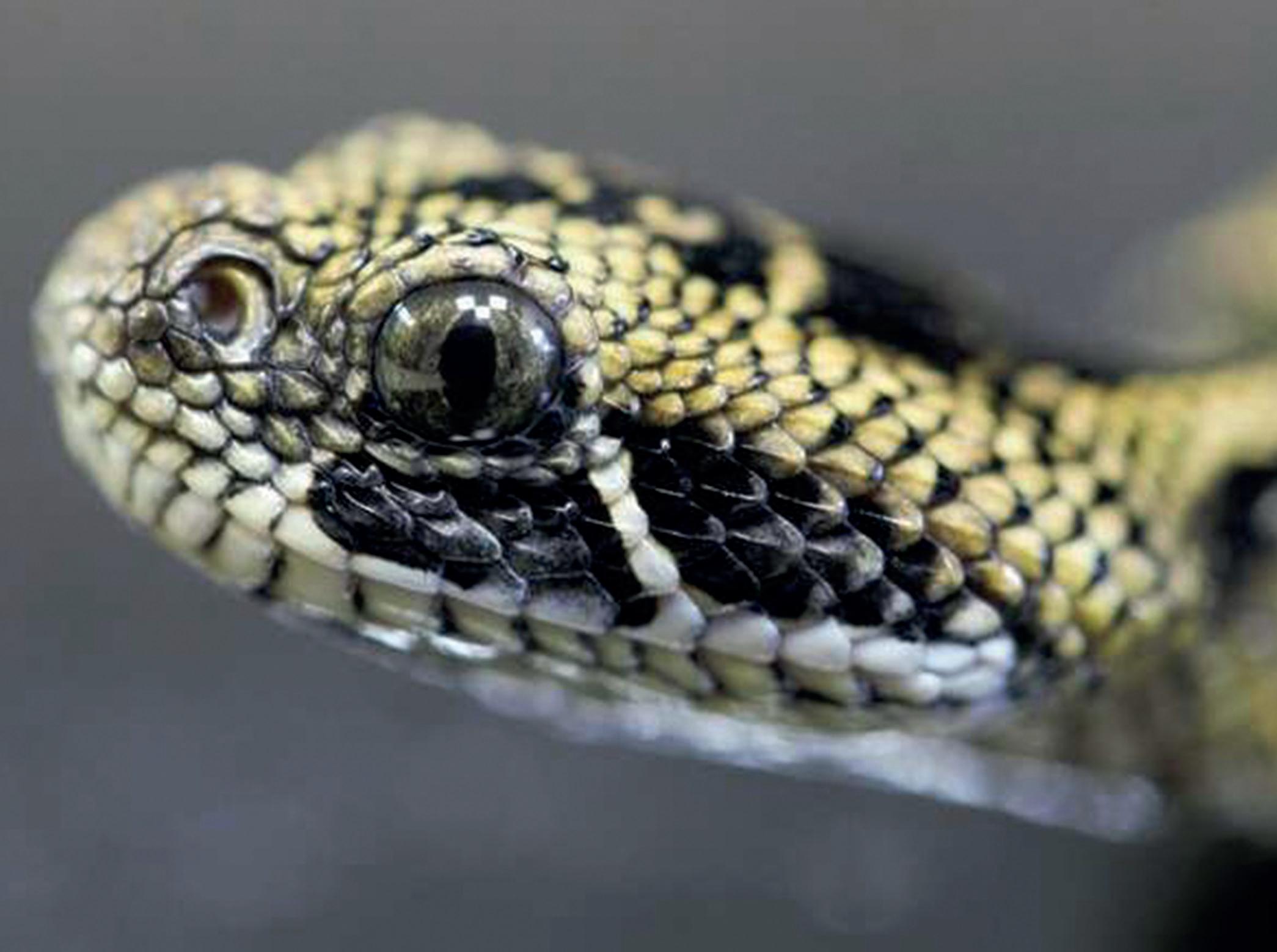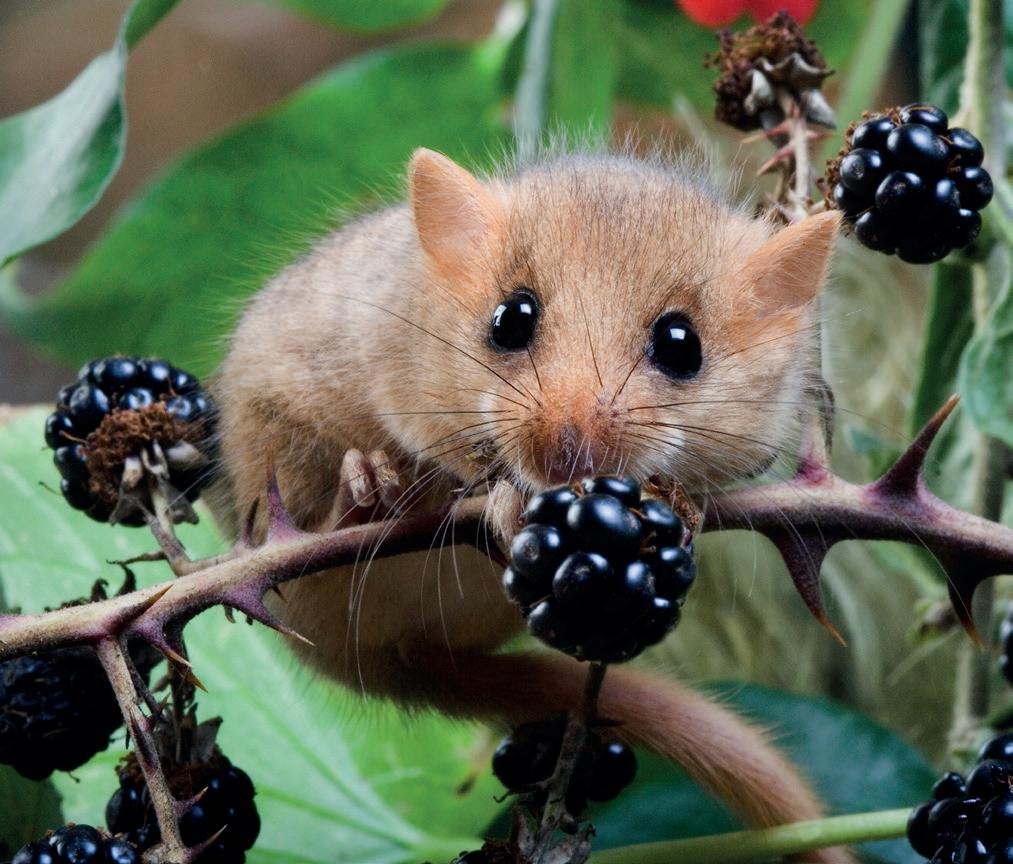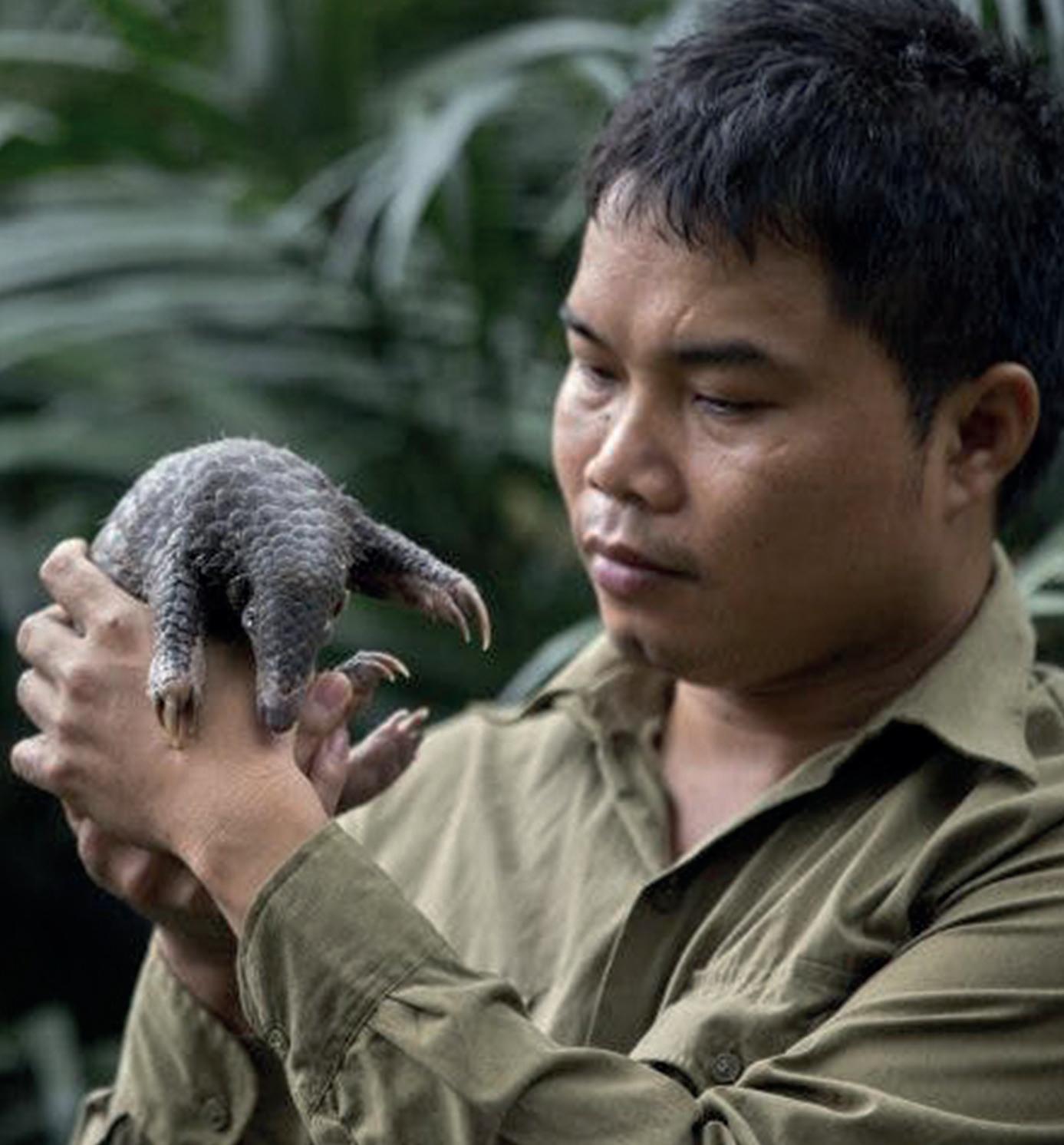
5 minute read
EXOTICS NEWS
The latest from the world of exotic pet keeping
Spawn Release
Advertisement
In Australia Taronga Zoo has released 187 critically endangered Northern Corroboree frog eggs into specially designed artificial pools created in the Brindabella Mountain Range - a sub-alpine region. In the next few weeks, these frog eggs will begin to hatch and in three to four years these same Northern Corroboree Frogs will reach sexual maturity where, hopefully, they will successfully breed and nest. This vital recovery effort is part of a broader conservation program aimed at ensuring the persistence of this beautiful species in the wild.
A European First Breeding
In June, the herpetology team at ZSL London Zoo celebrated the birth of eight Ethiopian mountain adders (Bitis parviocula), after two years of trying to breed this species. The adult pair arrived as juveniles in 2016.
First described in 1976, this species is believed to be endemic to the highlands of southwestern Ethiopia, between 1700 and 2800 metres above sea level. However, it is only known with certainty to reside in four locations in the country. With just four museum specimens available for study, important information regarding their conservation status and basic life history data are currently lacking.
Ethiopian mountain adders are so poorly known in the wild that they are yet to be assessed by the IUCN Red List. It is the first time Ethiopian mountain adders, native to the highlands of east Africa and known from just a small handful of wild specimens, have been bred in a European zoo.
The adult snakes were mixed together intermittently over a two-month period as the gestation period was uncertain, although it does fall between 125 and 190 days. These healthy young snakes are very small compared to the adults, measuring between 23 and 28cm long and weighing an average of just 18g they will likely be over one metre long and weigh more than one kilogram when they reach adulthood.
With fewer than 50 other Ethiopian mountain adders in zoos around the world, these young snakes are an important addition to the global zoo population. The eight youngsters and adults will live behind the scenes for a little while longer before some will move to an on-show enclosure, whilst the rest will move on to other zoos in due course.
Top Award. Mr Thai Van Nguyen, the founder and director of the Save Vietnam`s Wildlife – a specialist rescue centre, has been awarded the prestigious Goldman Environmental Prize work his conservation work with pangolins. Between 2014 and 2020 some 1,540 pangolins have been rescued from the illegal wildlife trade. In addition since 2008 his anti-poaching team have destroyed 9,701 animal traps, dismantled 775 illegal camps, confiscated 78 guns and helped arrest 558 people for poaching leading to a significant decline in illegal activities in Pu Mat National Park.
1,000th Hazel Dormouse Released.
The 1,000th captive-bred hazel dormouse has been released into the wild in the UK. As part of a long-term reintroduction scheme for these threatened mammals.
Once widespread, the animals have now disappeared from 17 English counties. Reintroduction, scientists say, is the only way to bring dormice back to habitats from which they have been lost.

The project is a collaboration between the wildlife charity People’s Trust for Endangered Species (PTES), Natural England and the University of Cumbria. Together they have brought 15 breeding pairs to a secret location in the Arnside and Silverdale Area of Outstanding Natural Beauty in Lancashire. With its tangle of hazel, willow and bramble, the chosen Lancashire release site is ideal for the rodents.
Fifteen years ago there were five populations in northern England but today there is just one. The decline in woodland and hedgerows are contributory factors in the reduced populations.
It is hoped that we will end up with a population of possibly 70 or 80 animals in three very closely connected woodlands.
With the help of 200 extra carefully monitored dormouse nesting boxes installed in the woodland, as well as footprint tunnels placed along branches the rodents will use to move around the undergrowth, the team will be watching closely to see how well the animals settle into their new home. The 30 dormice in this most recent (and most northerly) release were bred and reared in captivity at London Zoo. They were kept in quarantine for nine weeks and thoroughly checked for disease or parasites, before being transported more than 250 miles by car. The animals travelled in special dormouse nest boxes that were handmade by prisoners in HMP Doncaster and Humber - as part of a partnership between the PTES and the Department of Justice.
Elephants to Africa
The Aspinall Foundation have announced that they plan to send 13 African elephants from Howletts Wild Animal Park in Kent on a journey of over 4,350 miles to Kenya in 2022. This will be the first time this has ever been attempted.
The group ratio is 5.8 animals; from the oldest 34 year old matriarch “Tammi” down to the youngest animal - 1 year old male “Nguvu”. The Kenya Wildlife Service and The Sheldrick Wildlife Trust are both said to be involved, however they have apparently not yet been approached by the Aspinall Foundation about this future plan.
Meanwhile in the Bateke Plateau National Park in Gabon an infant western lowland gorilla has been born in the wild to female “Mayombe” and male “Djongo” – this is said to be the first wildborn offspring from a captive bred pair of gorillas returned to the wild.
Top Award
Mr Thai Van Nguyen, the founder and director of the Save Vietnam`s Wildlife – a specialist rescue centre, has been awarded the prestigious Goldman Environmental Prize work his conservation work with pangolins. Between 2014 and 2020 some 1,540 pangolins have been rescued from the illegal wildlife trade. In addition since 2008 his antipoaching team have destroyed 9,701 animal traps, dismantled 775 illegal camps, confiscated 78 guns and helped arrest 558 people for poaching leading to a significant decline in illegal activities in Pu Mat National Park.

The BIAZA Awards 2021
ZSL London Zoo was awarded several certificates - a gold in the category for behaviour and welfare with their “Evidence-based reptile behaviour and welfare” programme. A second gold, this time in the Animal Husbandry, Care and Breeding category was awarded for their project “Optimising calcium supplementation regimens in mountain chicken frogs (Leptodactylus fallax). A third gold award, in the same category was given for their project “Maintaining caecilians in captivity furthers our understanding of a poorly known taxon”
In the Behaviour and Welfare category award, ZSL London Zoo won a silver award for their project “Window on life: Training okapi for early pregnancy detection and monitoring using ultrasound, to facilitate husbandry decisions and improve welfare”.
Finally another silver award in the Field Conservation category, was presented for their project “Describing unknown amphibian life stages“.
Meanwhile at ZSL Whipsnade they received a bronze award in the Animal Husbandry, Care and Breeding category for their project “Foetal Doppler Training with a White-Faced Saki Monkey”.
A silver award in the Animal Husbandry, Care and Breeding category - was presented to Bristol Zoo Gardens for their project “Management and first UK Zoo breeding of the blue tree monitor (Varanus macraei) at Bristol Zoo Gardens”
Jersey Zoo gained a silver award in the Behaviour and Welfare category for their project “Development of Radio Frequency Identification Devices to Remotely Monitor Weight in Captive








